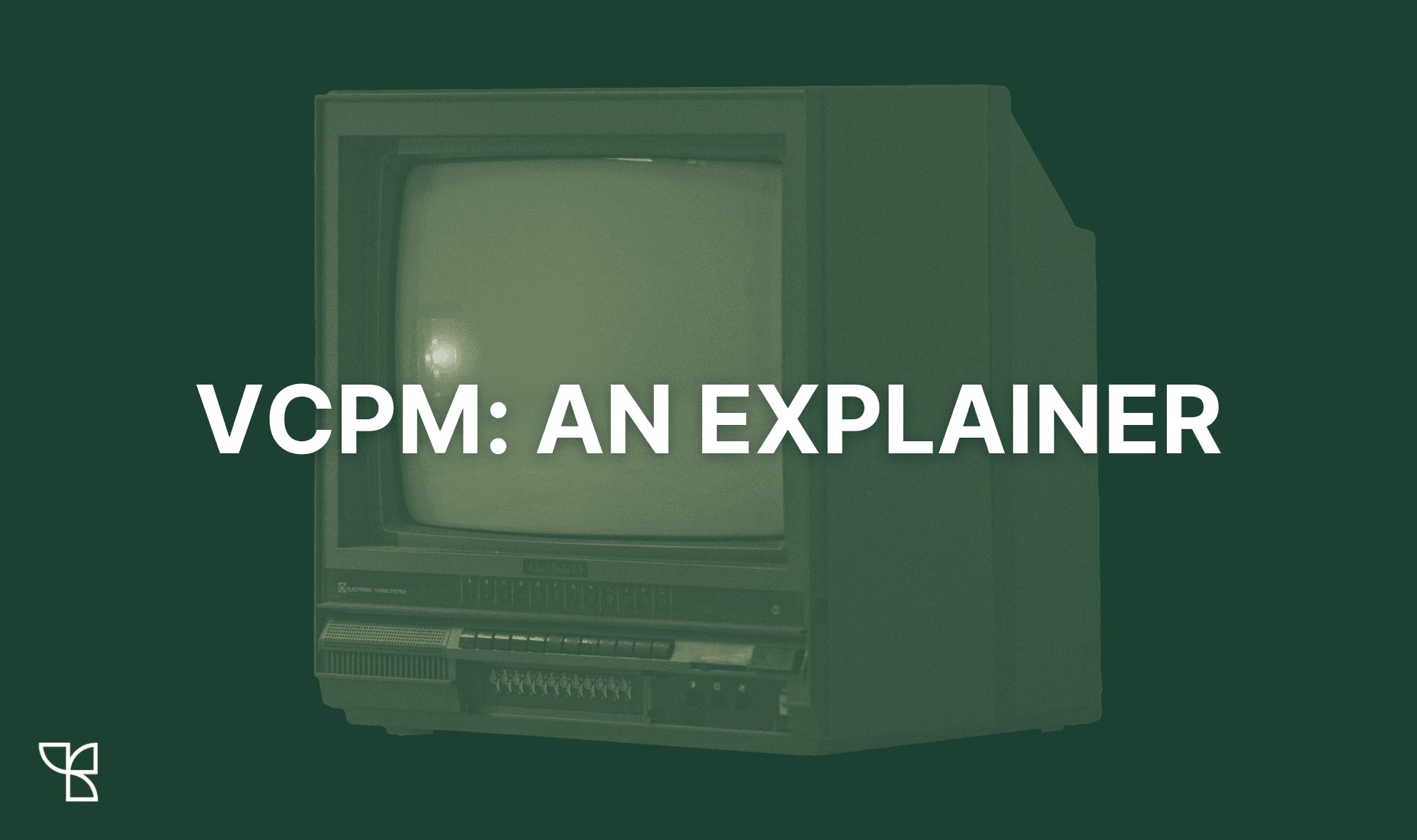
When Amazon introduced VCPM ads in 2022, there was a lot of curiosity around the new ad type—sellers were initially excited to see their ad performance increase by 10 or 20%! But once they realized this attribution model was based on views, not clicks, the excitement waned, and people were turned off from the idea of using VCPM.
But there’s nothing inherently wrong with a view-based attribution model like VCPM—you just have to know when to use it and how to interpret the stats. Our data experts at Kapoq have compiled everything you need to know about VCPM campaigns on Amazon.
Click-Attributed Sales vs View-Attributed Sales
A core feature of Amazon Ads is how they attribute sales to the ads you’re running. This allows you to measure the performance of your ads, and know whether they are ACTUALLY helping to drive sales for your business.
Like most ad networks, Amazon allows you to view attributed sales in two ways:
- Click attributed sales = the sales that occurred on your products after a customer was exposed to your ad, AND clicked it
- View attributed sales = the sales that occurred on your products after a customer was exposed to your ad (A view is counted if at least 50% of the pixels of the ad were displayed for at least 1 second on the user’s screen.)
You could infer that view-attributed sales will generally be higher than click-attributed sales, as there are more people who see the ad than click on it. Click thru rates on Amazon are often in the single digit percentage points.
The data backs this up — Kapoq’s internal data shows that when you look at the same campaigns, Amazon Ad’s view-attribution will show the attributed sales to be approximately 1.89x higher than click-attributed sales.
Certain campaigns, like Sponsored Brand and Sponsored Display Ads, allow you to pick between click and view attribution. Other campaign types, like DSP, will often default to view attribution, while Sponsored Products are click-only.
So, What are VCPM Ads?
VCPM stands for Viewable Cost Per Mille. Said another way, it’s the cost per viewable 1,000 impressions.
VCPM is an optional cost type for Sponsored Display and Sponsored Brand ads. When setting up a campaign, you have to pick between a standard cost-per-click campaign or a VCPM campaign, which is calculated based on views.
So, when setting a bid for a CPC campaign, you tell Amazon the max amount you want to spend per click. For a VCPM campaign, you’re bidding for the max amount you want to pay for 1,000 views of your ad.
Which Ad Type to Use
There’s two different bid optimizations inside of Sponsored Display—one is optimized for page views, and the other is optimized for conversions. Based on your expectations for the campaign, it’s important to choose the right type of optimization model and cost type.
Anecdotally, attuned advertisers noticed that optimizing for views has less of a tendency for a dynamic up-and-down bid to happen, which means a VCPM ad would theoretically perform better than a click-based model.
This makes sense because if you’re trying to maximize views, you would really run the same bid all the time. On the other hand if you’re optimizing for conversions, then you’re telling Amazon to bid more when there’s a higher chance of conversion.
VCPM ads are designed by Amazon to have a goal of reach, not ROAS. They want to change how you think about the success of a VCPM campaign even in their interface:

Amazon is funneling you into one of these two choices. They’re being upfront about the expectations you should have when picking a CPC-based campaign to “Drive page visits” (i.e. conversions and the goal/expectations for a VCPM campaign are different because they’re reach-based).
But if you don’t understand what type of campaign is being run when you select “Grow brand impression share,” you might be shocked by the results because VCPM is view-based, not click-based.
Keep This in Mind
If you’re running a VCPM Sponsored Display campaign, just be aware that the statistics that you see about that campaign will be view-based by default. That means the stats look way better when you’re looking at a VCPM campaign, because obviously click through rates tend to be much closer to zero than a hundred percent. And so you can easily see your ROAS be multiple times higher by switching to a view-based attribution model.
There’s nothing inherently wrong with view- or click-based attribution. But if you’re not aware that you’re running a view-based attribution, just know that it can really juice the stats in your account.
Understand your Amazon ad performance with ease in Kapoq.







